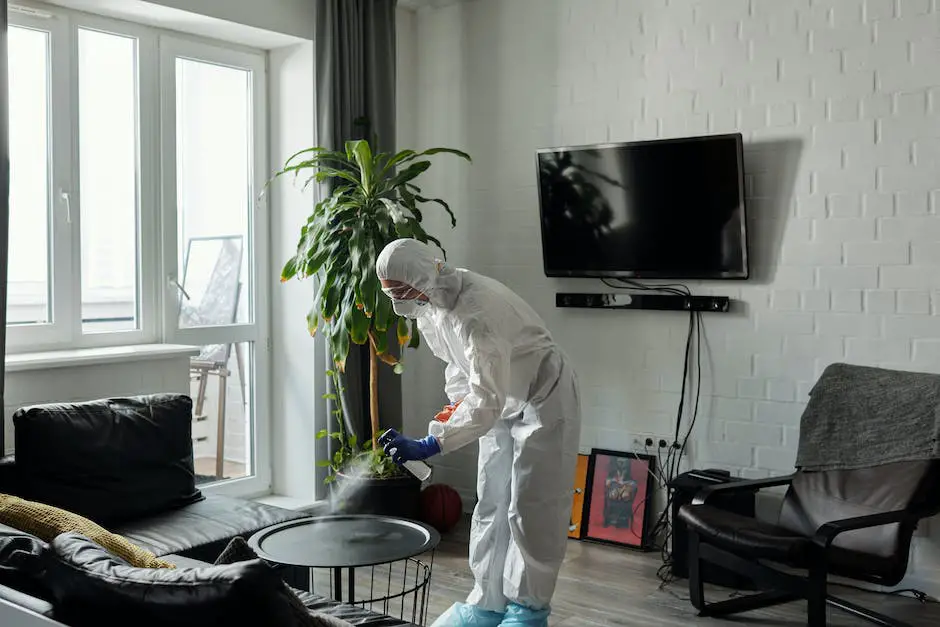Revamp Your Decor: How to Dye a Fabric Chair
Refreshing the look of your favorite fabric chair can be an exciting project, especially when you consider the option of dyeing. Such an endeavor provides an opportunity not just for sprucing up old furniture, but also for learning a new skill. From understanding the unique characteristics of fabrics and dyes, discovering different dyeing techniques, to mastering the safety measures necessary for handling dyes, this guide provides comprehensive insights for anyone willing to take this creative journey. Moreover, the proper preparation of the fabric chair for dyeing and the appropriate follow-up care to maintain the vibrant hues inherent in the process form significant segments of this enlightening guide.
Understanding Fabric and Dyes
Understanding Different Types of Fabric Used in Chairs
One of the primary fabrics used in chair construction is cotton due to its durability and ease of dyeing. This natural fiber is easily penetrated by dye, allowing for a wide variety of color options. Similarly, silk is highly receptive to dye, but its delicate nature requires careful handling to prevent damage. Wool can also be dyed, albeit with wool-specific dyes and at lower temperatures than cotton and silk.
Synthetic fibers, like polyester and nylon, are far less receptive to traditional dyes due to their non-porous nature. However, specialty fiber-reactive and disperse dyes can effectively color these materials. Leather, a non-fiber material often used in chair construction, also requires specific dye types—namely oil and alcohol-based dyes.
Quick Reference Guide to Dyeing a Fabric Chair
| Step | Description | Key Tips |
|---|---|---|
| Understanding Fabric and Dyes | – Different types of fabrics used in chairs – Suitable dyes for each fabric type | – Cotton and silk are easily dyed – Synthetic fibers require specialty dyes |
| Dye Techniques | – Direct dye application – Resist dyeing – Discharge dyeing – Painting or printing | – Technique affects color intensity and pattern |
| Safety Precautions | – Work in a well-ventilated area – Wear protective clothing – Proper disposal of dyes | – Always add dye to water, not the reverse |
| Preparation of Fabric Chair | – Cleaning and disassembling – Protection of non-dye areas – Test phase for color and adhesion | – Ensure chair is dry before dyeing – Protect hardware and non-fabric elements |
| Dyeing Process | – Materials preparation – Applying the dye – Fixing the dye – Rinsing and drying | – Ensure even application of dye – Use fixative for long-lasting results |
| Post-Dyeing Care | – Use cold water and gentle detergents for cleaning – Reduce exposure to direct sunlight | – Dyeing process can be repeated if color fades |
Suitable Dyes for Different Types of Fabric
For cotton, the most effective dyes are fiber-reactive dyes such as Procion MX. This dye chemically bonds with the fabric fibers, resulting in long-lasting color. Acid dyes work well for silk and wool, as they penetrate animal fibers better than plant fibers. However, for synthetic fibers, disperse dyes such as iDye Poly are recommended as they can color otherwise color-resistant fabrics. Leather, meanwhile, can be effectively dyed using oil or alcohol-based dyes available from most leather suppliers.
Discovering Various Dye Techniques and Their Impact on the Final Result
The impact of your dyeing process largely depends on the technique you employ:
- Direct dye application: Also known as immersion dyeing or dip-dyeing, this process involves immersing your fabric in a bath of dye. The result is a uniformly dyed piece of fabric.
- Resist dyeing: This process uses substances like wax or bands to ‘resist’ the dye on certain parts of the fabric, creating patterns.
- Discharge dyeing: This method involves removing dye from fabric to create a design. A bleaching agent is applied to colored fabric, effectively ‘discharging’ the color where applied.
- Painting or printing: Dyes or inks are painted or printed directly onto the fabric, allowing for detailed and intricate designs.
Each technique can greatly affect the final result of the dyed fabric chair, both in terms of color intensity and pattern.
Understanding Safety Precautions for Handling and Disposing of Dyes
Due to the chemical nature of dyes, it is crucial to follow safety precautions when handling and disposing of them. Always work in a well-ventilated area, preferably with open windows or an active exhaust fan. Wear protective clothing including gloves and an apron to avoid skin contact, and consider eye protection if there’s a risk of splashing.
When mixing dye baths, always add dye to water, not the reverse, to prevent dye dust from becoming airborne. When disposing of dyes and dye baths, follow local regulations. Never pour dyes down the drain without neutralizing them first. It’s best to contact a local hazardous waste disposal facility for accurate information on how to safely dispose of specific types of dyes.

Preparation of Fabric Chair
Preparation: Cleaning and Disassembling the Fabric Chair
Before you can begin dyeing your fabric chair, it must be properly prepared to ensure the dye adheres uniformly. Initially, the chair needs to be thoroughly cleaned to remove any dirt, grime, or oil that may interfere with the dyeing process. This can be done by using an upholstery cleaner or a solution of gentle soap and warm water. With a soft cloth, gently scrub the fabric, taking care to reach all areas. Let it dry completely before you start with the dye.
In some cases, disassembling the chair can make the process easier, particularly if it has intricate designs or hard-to-reach areas. Be sure to keep track of all screws, bolts, and other hardware when disassembling the chair, as you will need to reassemble it after dyeing.
Protection: Shielding Areas Not Intended for Dyeing
While preparing your fabric chair for dyeing, it’s important to protect areas you do not want to be dyed. This includes hardware, wood, metal parts, or other decorative details. You can protect these areas by covering them with masking tape or plastic wrap. This should be done with precision to avoid dye seeping into unwanted areas.
Test Phase: Ensuring the Right Color and Adhesion
Before applying the dye to the entire chair, it’s crucial to conduct a test. This involves applying the dye to a small, unnoticed portion of the fabric to ensure the dye adheres correctly and the color is what you expected. This will allow you to make adjustments to the dye concentration, if necessary, before you apply it to the entire chair.
Following these preparation steps will make the fabric chair dyeing process smoother and more effective, and ensure a uniform and vibrant color application.

Dyeing and Post-Dyeing Care
Materials and Preparation
Before starting the dyeing process, gather all needed supplies. This will include dye that’s compatible with your chair’s material, a few large buckets, a paint brush or spray bottle, plastic drop cloths, rubber gloves, and fixative (also known as dye-setting solution). Be sure to also have access to ample water for rinsing, and sunny, dry space to let your chair dry. Prepare the workspace by spreading out the drop cloths, and remove any hardware or non-fabric elements from the chair if possible.
Applying the Dye
The process of applying dye varies based on the tool: with a paintbrush, you can dab the dye into the fabric, making sure to agitate it slightly to ensure it penetrates fully. For a spray bottle, evenly mist the chair with dye, soaking the fabric completely. In both cases, be sure to apply the dye evenly, and if you miss a spot, it’s better to go over it again than leave a gap. Once the chair is fully coated, let it sit for a few minutes to ensure maximum absorption.
Fixing the Dye
Fixing the dye is an important step to get a long-lasting result. Soak the recently dyed chair in a solution made with fixative, following the manufacturer’s specifications on dilution and duration of soaking. This step will seal the dye into the fabric, helping to prevent it from washing out or fading quickly. After the chair has soaked for the recommended amount of time, remove it and wring out any excess solution.
Rinsing and Drying
Rinse the chair thoroughly but carefully with cool water until the water runs clear. This removes any unabsorbed dye and fixative. After rinsing, place the chair in a sunny, dry area, and let it dry completely. Depending on the amount of sun and warmth, this process might take a day or two.
Post-Dyeing Care
Once dyed, treated, rinsed, and dried, your upholstered chair needs proper care for the color to last. When cleaning the chair, use cold water and gentle, color-safe detergents. Avoiding harsh chemicals will stop the color from fading prematurely. Similarly, reducing the chair’s exposure to direct sunlight will also help the color remain vibrant. If the chair begins to fade too much or you want a new color, the dyeing process can safely be repeated. Following these steps and maintaining care should ensure a long-lasting, intense color for your chair.

As you embark on this color-filled journey, remember that careful preparation, precise execution and adequate post-dye care can significantly affect the final outcome. By investing time in understanding the relationship between the fabric and dye, mastering your dyeing technique and following the recommended care, you can breathe new life into any fabric chair. So don’t be afraid to experiment; go ahead, unlock a world of color possibilities and give your fabric chair an exciting new lease on life. This guide will be with you on this artistic voyage, turning every ho-hum chair into a vibrant, head-turning piece of functional art.



